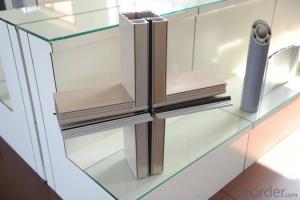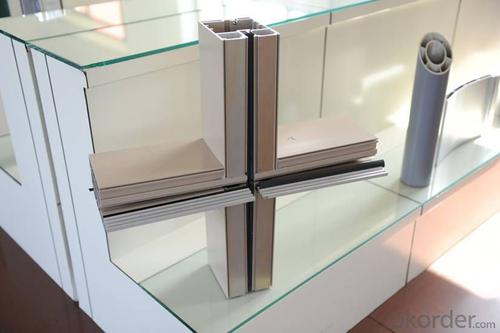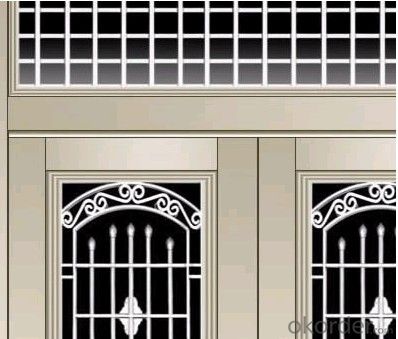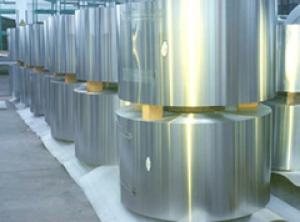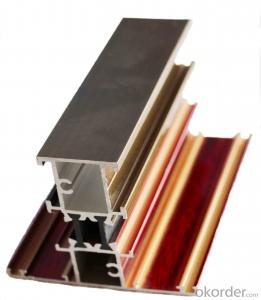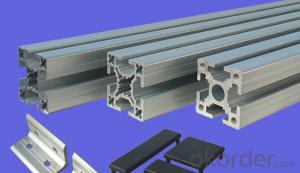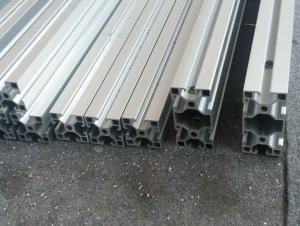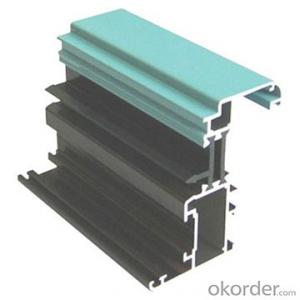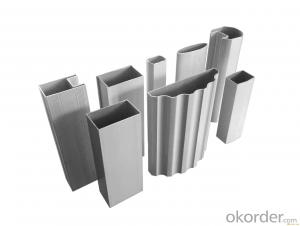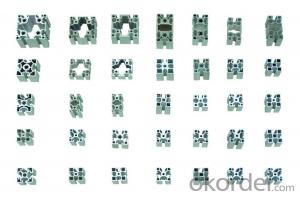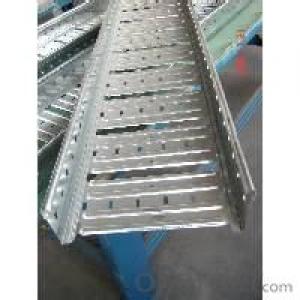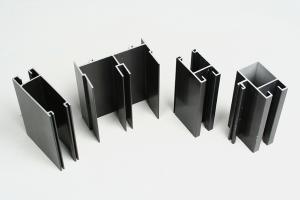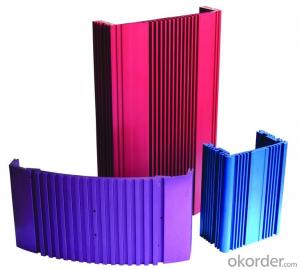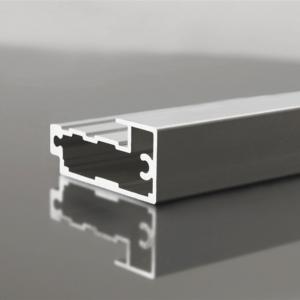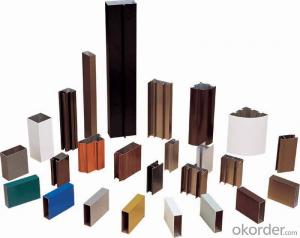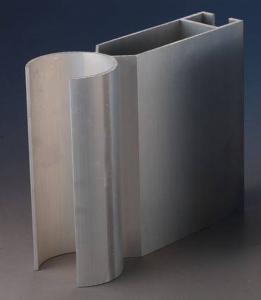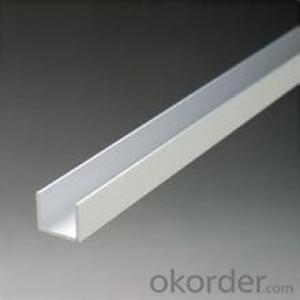Aluminum Gutter Profiles for Windows and Doors Extrusions
- Loading Port:
- Shanghai
- Payment Terms:
- TT OR LC
- Min Order Qty:
- 5 m.t.
- Supply Capability:
- 1000 m.t./month
OKorder Service Pledge
OKorder Financial Service
You Might Also Like
Specification
1. Structure of Aluminum Extrusion Profiles for Windows and Doors Description
Aluminum Extrusion Profiles for Windows and Doors is one semi-finished aluminium material. This coil can be rolled down to aluminium coil,sheet,circle ect. The alloy AA1050 is widly used in building, industry ect. Its weight is much lower than steel. So many customers choosed aluminium material instead of steel.
2. Specification of Aluminum Extrusion Profiles for Windows and Doors
Aluminum Extrusion Profiles for Windows and Doors | |
Main Specification | |
Alloy | AA1xxx (AA1050, AA1060, AA1070, AA1100 etc.) |
AA3xxx (AA3003, AA3004, AA3005, AA3105 etc.) | |
AA5xxx, AA6XXX (AA5052,AA5083, AA5754, AA6061, AA6062 etc.) | |
AA8xxx(AA8011, AA8006 etc.) | |
Temper | H14,H16, H18, H22, H24, H26, H32,O/F, T4, T6, T651 |
Thickmess | 0.01mm-100mm |
Width | 30mm-1700mm |
Standard | GB/T 3880-2006/ASTM |
Special specification is available on customer's requirement | |
3. Application of Aluminum Extrusion Profiles for Windows and Doors
(1).Interior: wall cladding, ceilings, bathrooms, kitchens and balconies, shutters, doors...
(2).Exterior: wall cladding, facades, roofing, canopies, tunnels,column covers , renovations...
(3).Advertisement: display platforms, signboards, fascia, shop fronts...
4. Feature of Aluminum Extrusion Profiles for Windows and Doors
Surfact Quality :
Be free from Oil Stain, Dent, Inclusion, Scratches, Stain, Oxide Dicoloration, Breaks, Corrosion, Roll Marks, Dirt Streaks and other defect which will interfere with use,
Mechenical Property:
Chemical Composite and Mechanical Property
5. Certificate of Aluminum Extrusion Profiles for Windows and Doors
SGS and ROHS(if client request, paid by client), MTC(plant provided), Certificate of Origin(FORM A, FORM E, CO), Bureau Veritas and SGS (if client request, paid by client), CIQS certificate
6. Image of Aluminum Extrusion Profiles for Windows and Doors
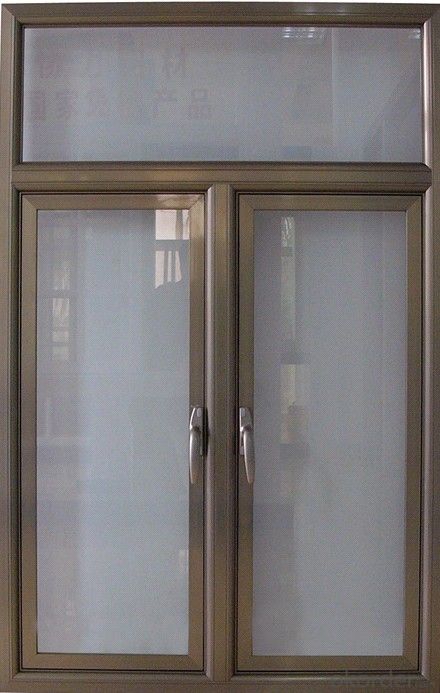
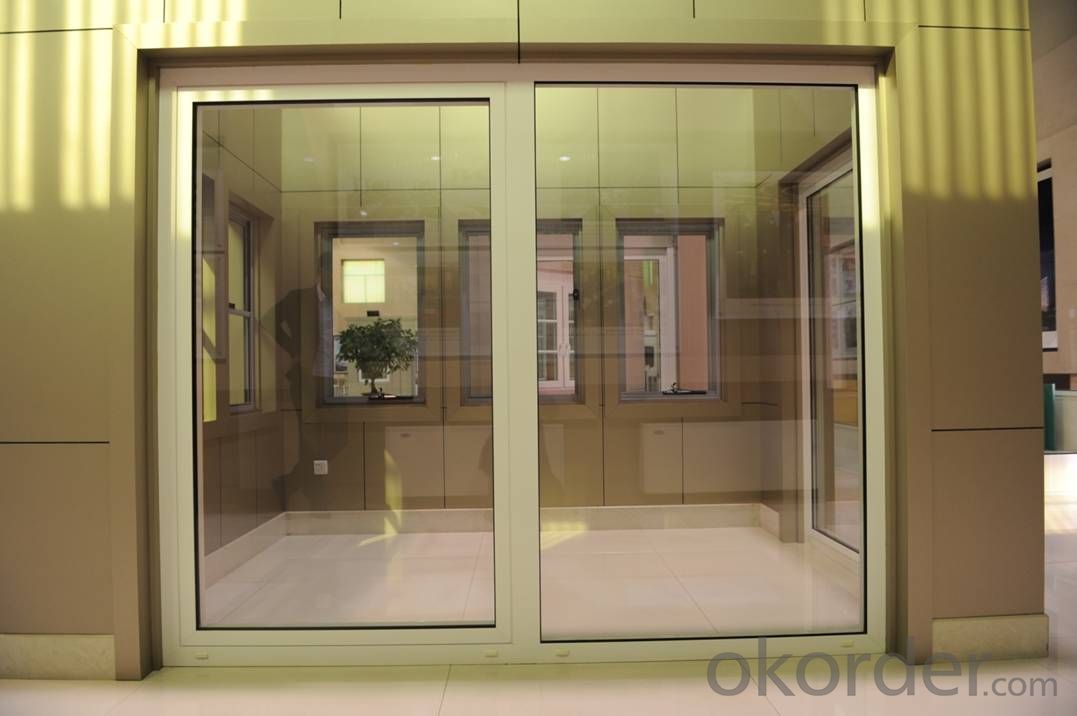
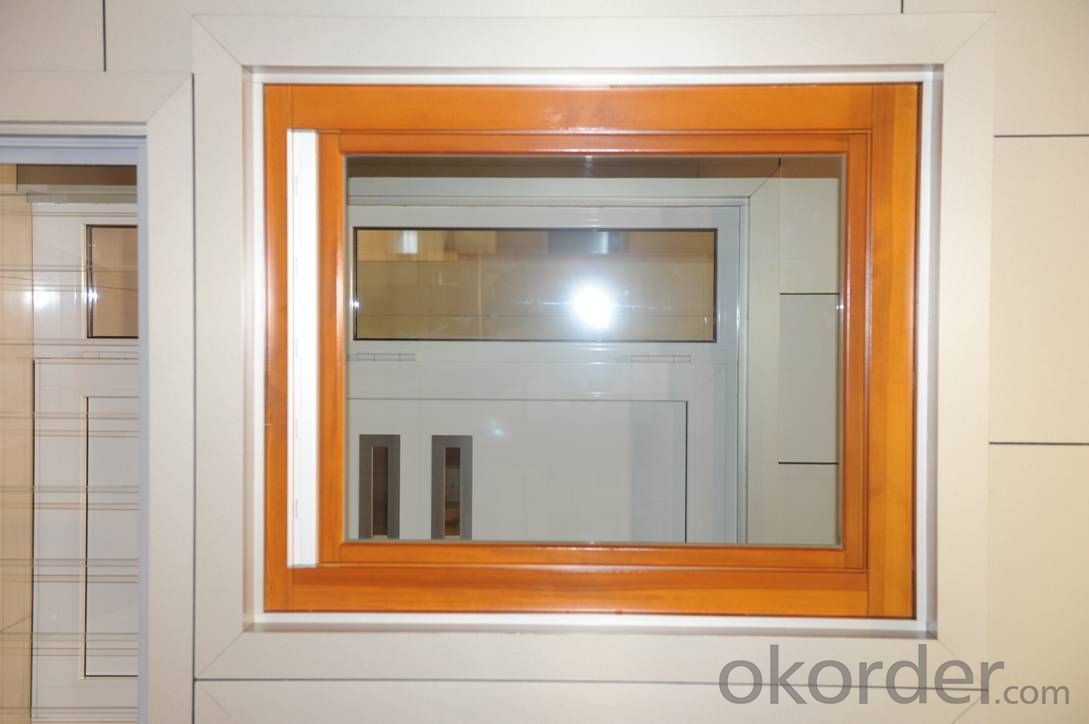
7. Package and shipping of Aluminum Extrusion Profiles for Windows and Doors
First, plastic cloth with drying agent inside; Second, Pearl Wool ; Third, wooden cases with dry agent , fumigation wooden pallets, aluminum surface could cover blue PVC film
8. FAQ
1) What is the delivery time?
Depends on actual order, around 20 to 35 days
2) What is the QC system:
We have QC staff of 20 persons and advanced equipment, each production is with MTC traced from Aluminum ingot lot.
3) What market do you mainly sell to?
Australia, America, Asia, Middle East, Western Europe, Africa etc
- Q: What are the advantages of using aluminum profiles in window and door frames?
- There are several advantages of using aluminum profiles in window and door frames. Firstly, aluminum is a lightweight material, making it easier to handle during installation and maintenance. This makes the overall construction process more convenient and cost-effective. Secondly, aluminum is highly durable and resistant to corrosion, which ensures a longer lifespan for the window and door frames. Unlike other materials, such as wood or steel, aluminum does not rot, warp, or rust when exposed to moisture or extreme weather conditions. This durability translates to lower maintenance and replacement costs over time. Additionally, aluminum profiles offer excellent thermal insulation properties. They can be designed with thermal breaks or insulating materials, preventing heat or cold transfer between the interior and exterior of a building. This results in improved energy efficiency and reduced heating and cooling costs. Furthermore, aluminum profiles can be easily customized to fit various design requirements. They are available in a wide range of shapes, sizes, and finishes, allowing for flexibility in architectural designs. Whether it is a modern or traditional style, aluminum profiles can be tailored to meet specific aesthetic preferences. Moreover, aluminum is a sustainable and environmentally friendly material. It is 100% recyclable without losing its properties, making it a perfect choice for those concerned about reducing their carbon footprint. Lastly, aluminum profiles offer enhanced security features. They can be reinforced with additional locking mechanisms and impact-resistant glass, providing better protection against break-ins and ensuring the safety of the occupants. In conclusion, the advantages of using aluminum profiles in window and door frames include their lightweight nature, durability, thermal insulation properties, customization options, sustainability, and enhanced security features. Choosing aluminum profiles can result in long-term cost savings, energy efficiency, and aesthetic appeal for any building project.
- Q: This question asks for methods to prevent corrosion on aluminum profiles during the installation process.
- <p>To prevent corrosion of aluminum profiles during installation, follow these steps: 1. Use stainless steel fasteners and avoid galvanized or carbon steel screws which can cause galvanic corrosion. 2. Keep the aluminum profiles clean and dry during installation to avoid contact with moisture which can initiate corrosion. 3. Apply a protective coating or sealant to the profiles, especially at cut edges where the protective oxide layer may be compromised. 4. Store aluminum profiles in a dry, cool place before installation to prevent moisture absorption. 5. Regularly inspect and maintain the profiles to identify and address any signs of corrosion early. By adhering to these practices, you can significantly reduce the risk of corrosion on aluminum profiles during installation.</p>
- Q: Differences between industrial aluminum and iron products
- Aluminum profiles are widely used, especially in industrial manufacturing.Iron products of high hardness, high temperature resistance, good processing performance, than the major, Nailanai shear stress; industrial aluminum and aluminum is of low hardness, good ductility, good corrosion resistance, light weight, good conductivity.
- Q: This question asks for a variety of green building materials that incorporate recycled aluminum profiles, indicating an interest in sustainable construction practices.
- <p>Recycled aluminum profiles are used in various green building materials to promote sustainability. These include: 1) Window and door frames, known for their durability and energy efficiency. 2) Facade systems, which provide a lightweight and strong alternative to traditional materials. 3) Structural components, such as beams and columns, offering strength with less material. 4) Roofing materials, which can be lightweight and resistant to corrosion. 5) Modular building systems, which use prefabricated aluminum components for quick assembly. 6) Fencing and railings, offering a low-maintenance option. 7) Solar panel supports, combining recycled aluminum with renewable energy technology. These materials reduce waste, save energy, and lower carbon emissions in construction.</p>
- Q: Top 10 ranking enterprises of aluminum profiles in China
- Don't just look at rankings, which is something false, we all know in the aluminum industry, aluminum extrusion and some more than 50 units, annual production capacity of 90 thousand tons, were stronger than some ten enterprises inside the above you can see, but in the rankings but no, this ranking is water.
- Q: Are aluminum profiles suitable for conveyor systems?
- Conveyor systems can benefit from the suitability of aluminum profiles. Aluminum, which is used in various industries due to its advantages, is both lightweight and durable. To begin with, aluminum profiles possess a favorable strength-to-weight ratio, making them perfect for conveyor systems. They can support heavy loads while remaining lightweight, facilitating easy installation and allowing for design flexibility. This attribute is particularly advantageous in conveyor systems that prioritize efficiency and ease of movement. Secondly, aluminum profiles exhibit resistance to corrosion. Unlike other metals, aluminum does not rust. As a result, the conveyor system can enjoy longevity and reliability, which is especially crucial in industries dealing with moisture or harsh environments. Furthermore, aluminum profiles offer exceptional customization options. They can be easily machined and shaped to match the specific requirements and dimensions of the conveyor system. This capability enables the creation of unique and efficient designs that ensure optimal performance and functionality. In addition, aluminum profiles possess excellent thermal conductivity. They efficiently dissipate heat, preventing potential damage or overheating to the conveyor system. This feature proves particularly beneficial in industries involving high-temperature processes. Moreover, aluminum profiles prove to be cost-effective. Although the initial investment may be slightly higher compared to other materials, the long-term benefits outweigh the costs. Aluminum requires minimal maintenance, reducing downtime and associated expenses. In conclusion, aluminum profiles are indeed suitable for conveyor systems. Their lightweight nature, corrosion resistance, customization options, thermal conductivity, and cost-effectiveness make them an ideal choice for a wide range of conveyor applications.
- Q: How is the price of aluminum profile calculated?
- General Factory aluminum prices are in accordance with the composition of component models of aluminum ingot price plus processing fees in the form of the aluminum price is reference price (the South China Sea coastal area informed factory according to the settlement price) or the Yangtze River (the mainland manufacturers in accordance with the price of aluminum ingots, aluminum price settlement price) every day is not the same, can check on the Internet to the price of aluminum ingots (holidays are closed, no aluminum price), and processing fees for each plant according to surface treatment you need and pricing, general spraying at around 4500, around 5500 (compared with ordinary electrophoresis but also can plant, GB material processing fee).
- Q: Can aluminum profiles be used for electrical applications?
- Aluminum profiles possess the capability to be utilized in electrical applications. Given its high conductivity, aluminum emerges as an ideal choice for facilitating electrical conduction. In the realm of electrical applications, aluminum profiles frequently find employment in power distribution systems, wiring conduits, and bus bars. By virtue of being lightweight and cost-effective, they present a favorable solution for electrical installations. Moreover, aluminum profiles exhibit commendable thermal conductivity, successfully aiding in the dissipation of heat emitted by electrical components. Nevertheless, it remains crucial to duly factor in the specific requirements of the electrical application at hand, ensuring that the aluminum profiles adhere to the requisite electrical safety standards and regulations.
- Q: Can aluminum profiles be used in sports equipment manufacturing?
- Yes, aluminum profiles can be used in sports equipment manufacturing. Aluminum is a popular choice in the manufacturing of sports equipment due to its lightweight yet durable properties. It allows for the creation of strong and sturdy equipment that is also easy to handle and maneuver. Aluminum profiles can be used in various sports equipment such as bicycles, tennis rackets, golf clubs, ski poles, and even lightweight frames for sports wheelchairs. The versatility and strength of aluminum make it an ideal material for sports equipment manufacturing, providing athletes with reliable and high-performance gear.
- Q: This question asks about the various methods for connecting aluminum profiles using fasteners.
- <p>There are several ways to join aluminum profiles together using fasteners: 1. Bolts and Nuts: Commonly used for strong and removable connections. 2. Rivets: Provide a permanent connection, suitable for high-stress applications. 3. Screws: Offer a secure and adjustable connection, often used in furniture and construction. 4. Pins: Used for alignment and positioning, often in lighter applications. 5. Adhesives: Can be used for a more aesthetically pleasing joint, though not as strong as mechanical fasteners. 6. Welding: Although not a fastener method, it is a common way to join aluminum profiles for a permanent and strong bond. Each method has its advantages and is chosen based on the specific requirements of the application, such as strength, permanence, and ease of assembly.</p>
Send your message to us
Aluminum Gutter Profiles for Windows and Doors Extrusions
- Loading Port:
- Shanghai
- Payment Terms:
- TT OR LC
- Min Order Qty:
- 5 m.t.
- Supply Capability:
- 1000 m.t./month
OKorder Service Pledge
OKorder Financial Service
Similar products
Hot products
Hot Searches
Related keywords
